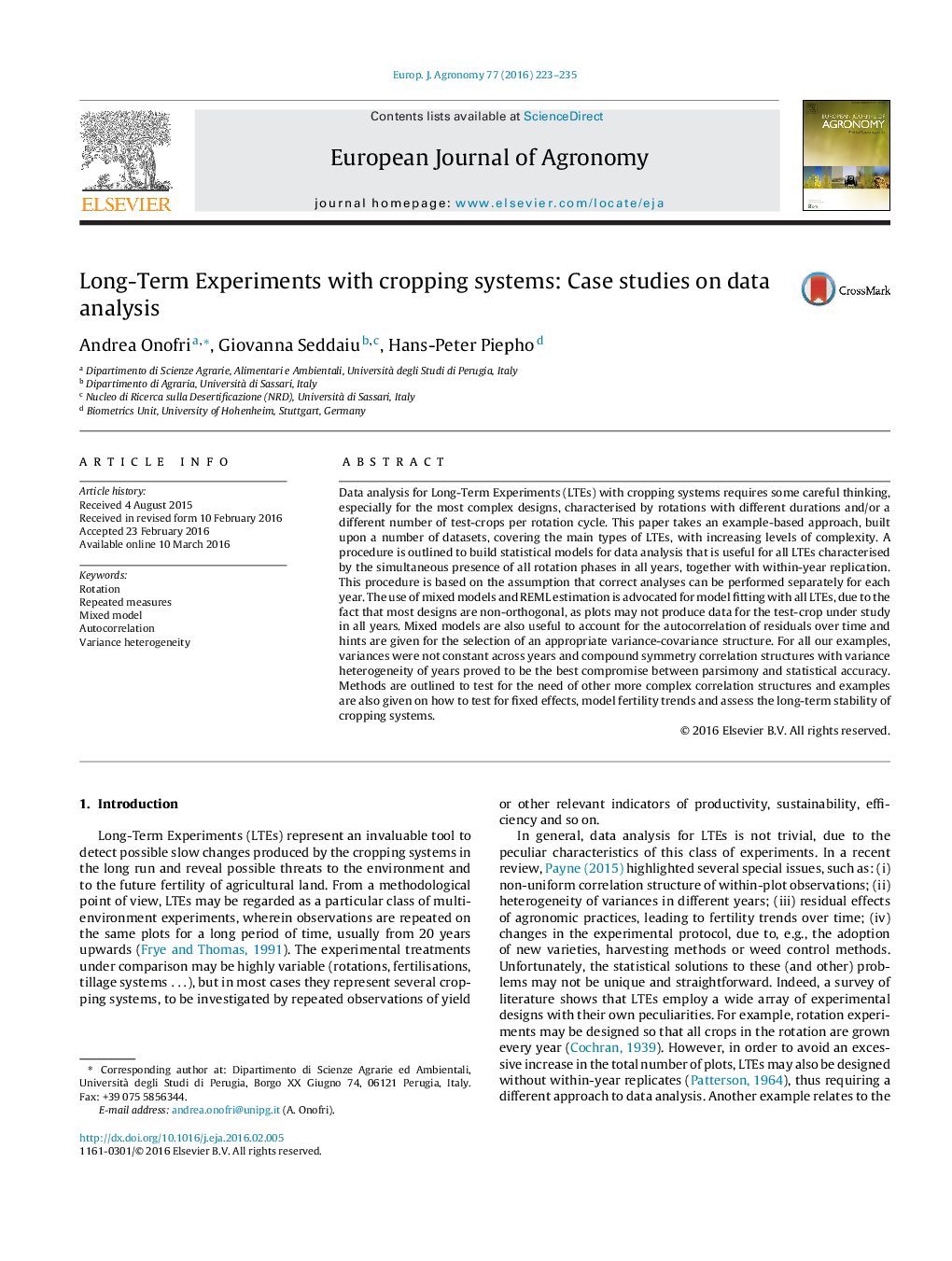| Article ID | Journal | Published Year | Pages | File Type |
|---|---|---|---|---|
| 4508724 | European Journal of Agronomy | 2016 | 13 Pages |
•Long-Term Experiments (LTEs) with cropping systems require careful data analyses.•Five types of LTEs with increasing complexity are considered and analysed.•A correct model building procedure is outlined and the use of REML estimation is advocated.•The selection of variance-covariance structures and tests for fixed effects are discussed.•Long-term ‘fertility’ trends and stability analyses are also considered.
Data analysis for Long-Term Experiments (LTEs) with cropping systems requires some careful thinking, especially for the most complex designs, characterised by rotations with different durations and/or a different number of test-crops per rotation cycle. This paper takes an example-based approach, built upon a number of datasets, covering the main types of LTEs, with increasing levels of complexity. A procedure is outlined to build statistical models for data analysis that is useful for all LTEs characterised by the simultaneous presence of all rotation phases in all years, together with within-year replication. This procedure is based on the assumption that correct analyses can be performed separately for each year. The use of mixed models and REML estimation is advocated for model fitting with all LTEs, due to the fact that most designs are non-orthogonal, as plots may not produce data for the test-crop under study in all years. Mixed models are also useful to account for the autocorrelation of residuals over time and hints are given for the selection of an appropriate variance-covariance structure. For all our examples, variances were not constant across years and compound symmetry correlation structures with variance heterogeneity of years proved to be the best compromise between parsimony and statistical accuracy. Methods are outlined to test for the need of other more complex correlation structures and examples are also given on how to test for fixed effects, model fertility trends and assess the long-term stability of cropping systems.
